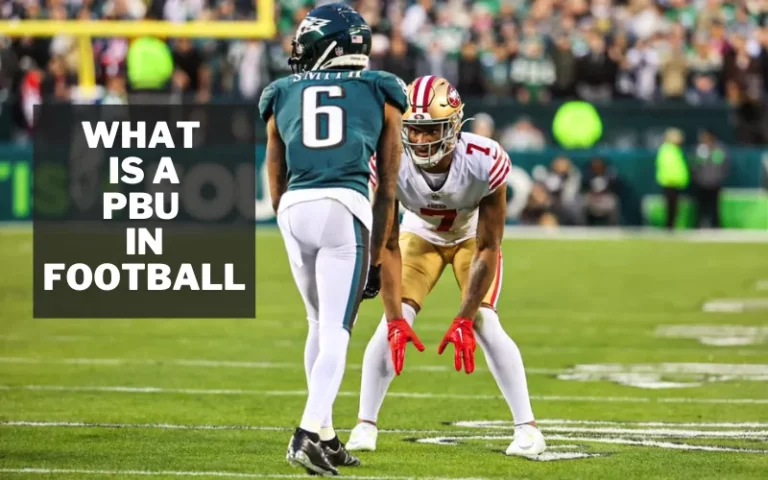What Is An Interception In Football?
When a defensive player intercepts a pass intended for the offensive team, it’s called an interception in football. It typically occurs when the pass recipient turns away or doesn’t anticipate receiving the ball. Any down can have an intercept, typically resulting in a change of possession.
So, what is an interception in football? In football, an interception or pick occurs when a defensive player intercepts a forward pass for the other team’s quarterback or offensive player. Please read on for a more thorough explanation of interception definitions and football interception statistics.
Is An Interception In Football Good?
If the defensive player is still upright after the interception, they may try to sprint toward the direction of the opposing team’s end zone. His team will take over at the spot where the downed defensive player tackles.
For instance, a corner defending a wide receiver might leap before his opponent to catch the ball. Since this is an interception, he can tackle and continue running to the end zone. After he is down, the ball will be in the offensive team’s hands.
Interception NFL is the act of intercepting, which entails taking the ball away from your opponent. It may occur if you interfere with a pass or dribble.
Why Is Interception Important In Football?
One way a defense might regain possession of the ball from the other team is through interceptions. These are major plays that can give the defense a scoring opportunity in addition to changing the football’s possession.
Additionally, it typically provides their offense with excellent field position. Interceptions are a crucial play that can change the game’s direction and significantly affect the final score and result.
How Do Receptions in Football Work?
As previously stated, an interception happens when a defensive player catches a pass thrown by the offensive team. There are a few possible causes for this, but most frequently. It is because the person receiving the pass is not looking or anticipating the ball being sent their way.
Any down can have an intercept, typically resulting in a change of possession. At the location of the interception, the team that intercepts the pass obtains possession of the ball. The team regains possession at its 20-yard line if the interception happens in the end zone.
What Is The Rule Of Interception?
The regulations about interceptions are identical to those governing a standard catch. The defender needs to keep the ball in their possession to the ground with both feet planted in bounds.
The player will not knock down who intercepts the pass and frequently falls to the ground by contact. It enabled him to rise back up and gain as many yards as possible.
Instead of running for further yards after an interception in the end zone, the player with the ball may choose to take a knee. You can guarantee the offense to get the ball at the 25-yard line if a player takes a knee in the end zone.
The defender can take a knee if the interception in the field of play, and they choose not to run it back. Interceptions returned for touchdowns are worth two points instead of six on two-point conversion tries.
What Comes After an Interception?
When a defender records an interception, the ball is live, much like when an offensive player completes a pass. The defender can move the ball upfield until tackled or forced out of bounds. According to football rules, the defending team effectively takes over as the offensive team after an interception.
As the defender who intercepted the ball attempts to advance the ball, defenders may block players on the offensive team. It implies that to stop the play, the offensive team must either tackle the defender with the ball or force him out of bounds. Alternatively, they can play defense.
The offensive team will finish and take over at that spot on the field after the play, either because the defender was tackled or went out of bounds. From there, it will be a first-and-10 for them.
Remember that when the defender registers an interception, the same rules that apply to ballcarriers also apply to him. He must hold onto the football because he could fumble it if it gets knocked loose. He can likewise not toss the football forward but pitch it back to a teammate behind him.
They are usually intercepted if a pass and someone cuts between the players to intercept it. A person dribbling or holding the ball and having it taken away from them is known as a steal.
Similarly, the phrase pick off is a colloquial euphemism for intercept, as in The cornerback intercepted the pass.
It’s called a tackle when you steal the ball from an attacker while he’s in possession. It’s called a block when you block the attacker after they’ve made their shot. You can consider it will be an interception if you block the attacker after they have completed a throw.






